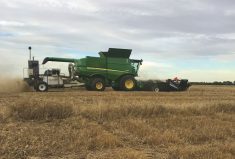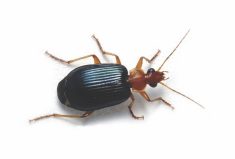Each growing season, I get asked to identify weed species found in field crops that are not overly common but are of concern in fields where they are being found. Over the next three columns, I’ll provide a summary of what was identified and its importance.
Loose silky bent-grass (called common windgrass in Michigan)
Historically, this grass (see photo at top) is found in winter wheat fields on lighter textured soils in Elgin and Norfolk counties. In 2021, it was identified in winter wheat fields in Middlesex, Oxford and Elgin counties. This is a winter annual grassy weed that emerges in the fall and will often flower at the same time as winter wheat. Although yield loss from weed competition in winter wheat is typically low, winter annual grasses have been shown to cause significant yield losses.
Read Also

Sensing the soil: Root cell research finds ‘stress hormone’
Research into how root cells react to soil stressors could help plants better adapt to changes in their climate.
Management: Research out of Michigan State University has shown that Simplicity GoDRI (pyroxsulam) provides the best control of loose silky bent-grass when applied either in the fall or early spring. Axial (pinoxaden) applied in the spring has provided fair to good control.
Is this loose silky bent-grass worth worrying about? Over the past few years, grassy weeds like chess, bluegrass and loose silky bent-grass seem to be increasing. Since they can decrease yield (by as much as 50 per cent), fields should be scouted in early April for the presence of grassy weeds between the rows of wheat and controlled if abundant.
Creeping red fescue
More commonly known as a turf and forage grass, a specimen was sent in because it had survived an application of glyphosate (540 g/L) at 1 L/acre in field corn (see photo below). Creeping red fescue tolerance to glyphosate is not new. A paper published in 1985 by Richard Comes and colleagues compared the tolerance of 35 cultivars to glyphosate. Their interest was in the potential of seeding ditch banks to creeping red fescue and then once established, applying glyphosate to control weeds. They found that all cultivars tolerated a 0.8 L/acre rate of glyphosate (540 g/L).

Management: The outlook is not great. Many of the herbicides that one might think to try because they control grassy weeds in other crops are not effective. Both Assure II and Venture are post-emergence herbicides labelled for use in creeping red fescue to control grassy weeds. Research out of Oregon State University by D.W. Curtis and colleagues has demonstrated that creeping red fescue has good tolerance to herbicides like Zidua SC, Dual II Magnum, Frontier Max and Acuron. Aside from using a moldboard plough in the fall, the 1985 Comes paper gives the best insight into how one can control creeping red fescue with glyphosate. When they applied a rate of 1.6 L/acre of glyphosate (540 g/L) in the fall and then again in the spring, they were able to control all of the cultivars.
Is it worth worrying about? At this point, creeping red fescue is not very common in field crops. That said, some of these turf grass species that get planted along roadsides can be extremely difficult to control when they establish in cultivated fields. Dealing with them early will save a lot of grief down the road.
Have a question you want answered? Hashtag #PestPatrol on Twitter to @cowbrough or email Mike at [email protected].















